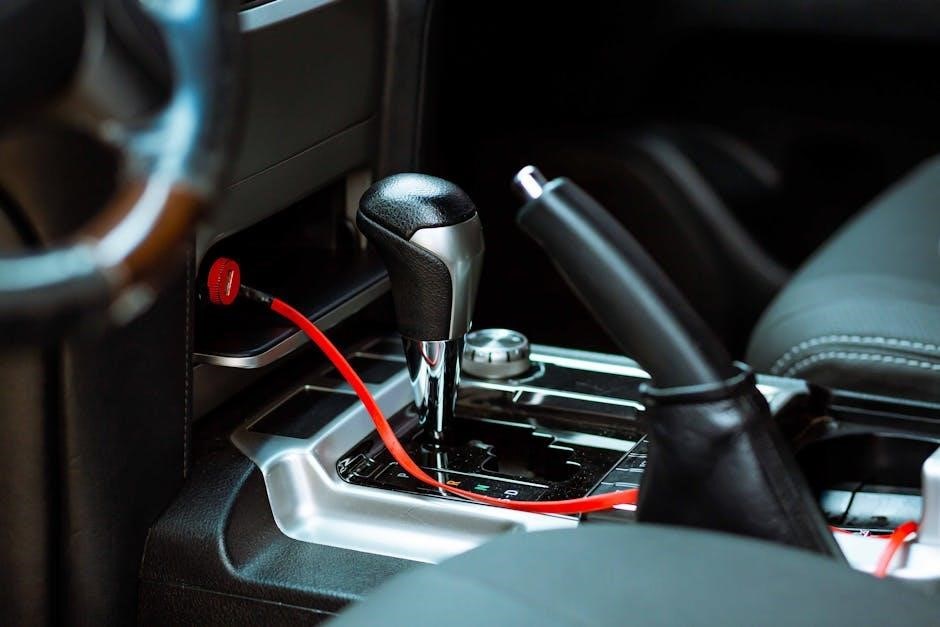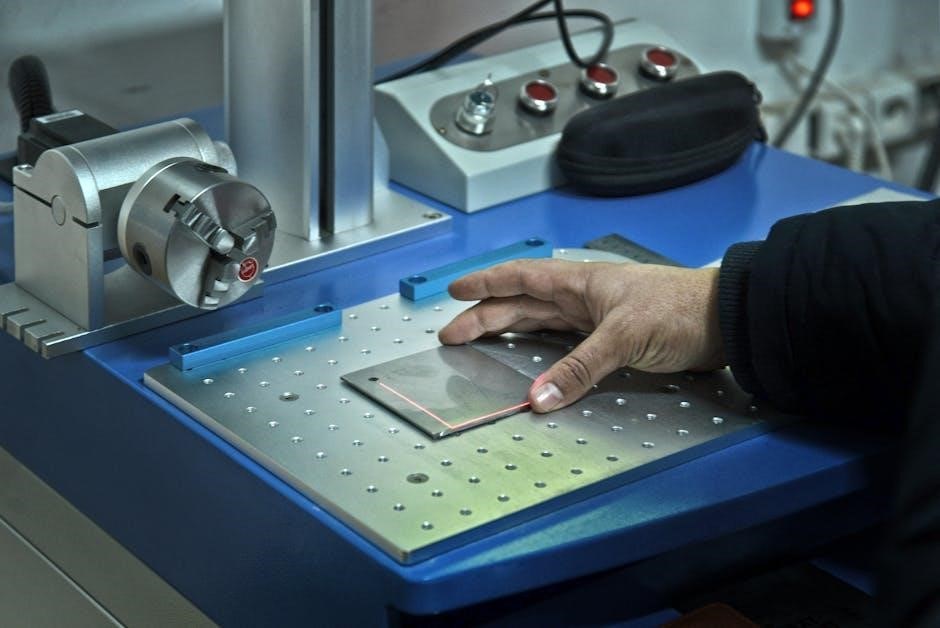This document serves as a comprehensive guide to understanding and utilizing control console operating manuals. These manuals are essential for safe and effective operation, providing detailed instructions and troubleshooting information. Proper usage ensures optimal performance and longevity.

Purpose and Scope of Manuals

The primary purpose of a control console operating manual is to provide users with clear, concise instructions for the safe and efficient operation of the console. These manuals serve as a comprehensive resource, detailing all aspects of the console’s functionality, from basic operations to advanced features. The scope of the manual typically includes setup procedures, operating instructions, troubleshooting guides, and maintenance schedules. They are designed to empower users to effectively manage the console, ensuring optimal performance and minimizing downtime. Furthermore, these manuals often incorporate safety guidelines and emergency procedures, promoting a secure working environment. The information within the manual enables users to understand the console’s capabilities, limitations, and potential hazards. Ultimately, the manual aims to equip users with the knowledge necessary to operate and maintain the control console effectively, contributing to overall productivity and safety. This ensures proper usage, extending the lifespan of the equipment and preventing costly repairs.

Key Components and Functions
Understanding the key components and their functions is crucial for effective control console operation. This section details essential elements like displays, controls, and interfaces, explaining their roles in system management and overall functionality.
Overview of Console Elements
This section provides a detailed overview of the various elements found on a typical control console. These include input devices such as keyboards, mice, and touchscreens, which facilitate user interaction and data entry. Output devices, like monitors and displays, present critical system information and feedback.
Control panels, often featuring buttons, switches, and sliders, allow for direct manipulation of system parameters. Furthermore, communication interfaces, including network ports and serial connections, enable integration with other devices and systems. Understanding the purpose and function of each element is crucial for effective console operation and control. Illuminated bargraph displays may also be present, showing fader positions.
The specific elements and their configuration can vary depending on the console’s intended application, from lighting control to industrial process management.

Operation Procedures

This section details the standard operating procedures for the control console. It includes step-by-step instructions for various tasks, ensuring consistent and reliable performance. Proper adherence to these procedures is essential.

Starting and Shutting Down the Console
Initiating and concluding console operations require specific sequences to ensure system stability and prevent data corruption. Prior to starting, verify all power connections and peripheral devices are securely attached. Consult the technical specifications in the appendix for voltage and amperage requirements; The power-on sequence typically involves pressing the main power button, followed by system initialization. Watch for indicator lights confirming successful startup. During shutdown, always use the designated shutdown procedure within the operating system. Avoid abrupt power disconnections. A controlled shutdown allows the system to save data and properly terminate processes. Never turn off the console while data is being written or processed, this may lead to catastrophic loss of data.
Navigating the User Interface
The user interface (UI) is your primary interaction point with the control console, offering access to various functions and settings. Understanding the UI layout is crucial for efficient operation. Typically, the UI consists of menus, toolbars, and display panels. Menus provide access to system settings, configurations, and advanced functions. Toolbars offer quick access to frequently used commands. Display panels present real-time data, system status, and error messages. Familiarize yourself with the iconology used throughout the interface. Hovering the mouse cursor over an icon often reveals a tooltip explaining its function. Use the search function to quickly locate specific features or settings. Remember that the UI provides a very powerful lighting console for intensity channels.

Troubleshooting and Maintenance
This section provides guidance on resolving common issues and performing preventative maintenance. Regular maintenance extends the console’s lifespan. Troubleshooting steps help diagnose and fix problems efficiently. Always consult the manual before attempting any repairs.
Common Issues and Solutions
This section addresses frequent problems encountered while operating the control console. A common issue involves unresponsive controls, often resolved by checking power connections and ensuring proper software initialization. Display malfunctions, such as flickering or distorted images, might indicate hardware failures or driver conflicts. For software-related problems, restarting the console or reinstalling the software can be effective solutions. Overheating can cause performance degradation; ensuring adequate ventilation and cleaning cooling fans are crucial preventive measures. Addressing communication errors with connected devices requires verifying cable connections and network settings. If problems persist, consulting the technical specifications and contacting support are recommended steps. Remember to follow safety guidelines during troubleshooting to prevent electrical hazards and equipment damage. Regularly review troubleshooting guides to stay informed about potential issues and their solutions for optimized console performance.
Preventative Maintenance Tips
Regular preventative maintenance is crucial for extending the lifespan and reliability of your control console; Begin by establishing a consistent cleaning schedule, using a soft, damp cloth to remove dust and debris from the console’s surface and ventilation areas. Inspect all cables and connections regularly, ensuring they are securely fastened and free from damage. Periodically check the cooling system, cleaning fans and vents to prevent overheating. Run diagnostic tests to identify potential issues before they escalate. Update software and firmware to the latest versions for optimal performance and security. Keep the console in a well-ventilated area, away from direct sunlight and extreme temperatures. Avoid placing heavy objects on the console to prevent physical damage. Implement surge protection to safeguard against power fluctuations. By adhering to these preventative maintenance tips, you can minimize downtime and ensure the long-term functionality of your control console.

Safety Guidelines
Prioritize safety by adhering to all guidelines outlined in this manual. Always disconnect power before maintenance. Be aware of emergency shutdown procedures. Proper grounding is critical. Avoid liquids near the console. Follow these precautions diligently.
Emergency Procedures
In emergency situations, immediate action is crucial. Familiarize yourself with the location of emergency power-off switches and their proper operation. This manual details specific shutdown sequences for various emergency scenarios, including power failures, system malfunctions, and fire hazards. Always prioritize personnel safety above all else. Understand the audible alarm signals and their corresponding actions.
Report all incidents, no matter how minor, to the designated safety personnel immediately. Document the event accurately and completely. Regular drills and training sessions are essential to ensure preparedness. Know evacuation routes; Be aware of first aid locations. Never attempt to repair the console during an emergency; Follow established protocols for contacting emergency services. Stay calm and clear-headed. Remember, a swift and informed response can mitigate potential damage and prevent injuries. This section provides critical guidance for handling unforeseen events effectively.

Appendix
The appendix includes supplementary information, such as technical specifications, wiring diagrams, and a glossary of terms. This section provides additional resources for in-depth understanding and maintenance of the control console, beyond the core operational instructions.
Technical Specifications
This section details the precise technical specifications of the control console, providing essential information for integration, maintenance, and troubleshooting. Key aspects covered include power requirements, input and output signal types, operating temperature ranges, and physical dimensions. Detailed information about the console’s control capacity, such as the number of channels and supported protocols, is also provided. Furthermore, this section will outline the specifications for illuminated bargraph displays, when applicable, offering insights into their functionality and limitations. Understanding these specifications is crucial for ensuring compatibility with other systems and maintaining optimal performance. Refer to diagrams and charts for detailed measurements and configurations. This allows for safe and effective operation.


